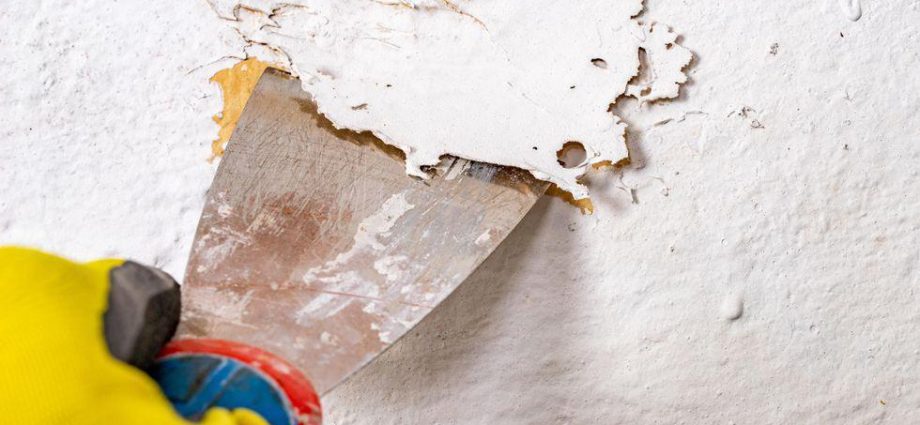WEDNESDAY, May 1, 2024 (HealthDay News) — A toxin found in paint strippers that’s responsible for 85 U.S. deaths over the past five decades will be phased out for many uses, under an Environmental Protection Agency rule finalized Tuesday.
The cancer-causing solvent methylene chloride will still have some allowed uses, but with strict guidelines aimed at keeping workers safe.
“Exposure to methylene chloride has devastated families across this country for too long, including some who saw loved ones go to work and never come home,” EPA Administrator Michael Regan said in an agency news release. “EPA’s final action brings an end to unsafe methylene chloride practices and implements the strongest worker protections possible for the few remaining industrial uses, ensuring no one in this country is put in harm’s way by this dangerous chemical.”
Environmental health advocacy group Toxic-Free Future applauded the move, but noted that it was a long time coming. The chemical was first put on the EPA’s “first ten chemicals” for review nearly eight years ago.
Lauren Atkins’ son, Joshua, died using a coating remover that contained methylene chloride.
“I fought this fight for my son, Joshua. This fight never should have had to happen, and never should have taken this long. Methylene chloride should never have been on the market,” she said in a statement from Toxic-Free Future.
Atkins’ story is not unique.
“My son, Kevin, died in 2017 from methylene chloride exposure from refinishing a bathtub at work,” Wendy Hartley said in the EPA news release. “I am pleased that the EPA is finally taking action and banning methylene chloride as a commercial bathtub stripper. This is a huge step that will protect vulnerable workers.”
Methylene chloride is most often used in commercial paint strippers, but can also be found in metal degreasers, aerosols, adhesives, paint and coating products, and in the manufacturing of some pharmaceuticals, according to the EPA.
However, the chemical can cause illness if it comes in contact with skin or is inhaled. It’s especially dangerous when methylene chloride fumes build up in small, unventilated spaces. At lower doses, fumes cause dizziness and numbed limbs, while at higher doses it can turn off the part of the brain that directs breathing.
At that point, unconsciousness and even heart attack can occur, leading to death.
According to one study, 85 such fatal cases are known to have occurred between 1980 and 2018, the EPA said, with most occurring in the workplace.
Attempts to curb methylene chloride use took place during the Obama and Trump administrations, but the new EPA rules are the toughest yet.
They ban the use of the chemical in paint strippers used for commercial purposes, and one year from now consumers won’t be able to buy paint strippers containing methylene chloride.
Overall, most industrial and commercial uses will be banned within the next two years.
Methylene chloride is still essential for a select few uses, the EPA said: To make refrigerants, electric vehicle batteries, and for what the EPA called “critical military and other federal uses.”
But even these uses will come with tough safeguards in place for workers. Companies will be strongly encouraged to find alternative chemicals, to minimize its use whenever possible and to train workers in its safe use, including personal protective equipment, the EPA said.
“We applaud the EPA for its final rule to protect all workers from unreasonable risk,” Dave McCall, international president of the United Steelworkers, told CNN. “Our union and the entire labor movement looks forward to working with the EPA on implementation of this rule.”
There are some uses for methylene chloride that fall outside of the EPA’s jurisdiction — for example, the food industry (it is used to make decaffeinated coffee and tea) or its use in pesticides or pharmaceuticals.
In those contexts, other agencies, such as the U.S. Food and Drug Administration, would have oversight.
“EPA’s action today is a strong step forward in updating our public health and environmental policies, in keeping with modern science and a clear mandate to prevent loss of life,” added Cindy Luppi. She’s national field director for Clean Water Action, which mobilized its membership and coalition partners and testified directly in support of this action.
“We celebrate this step and honor the memory of all who lost their lives tragically from coming in contact with this toxic chemical,” Luppi said in the Toxic-Free Future statement.
More information
Find out more about the dangers of methylene chloride at OSHA.
SOURCES: Environmental Protection Agency, news release, April 30, 2024; Toxic-Free Future, news release, April 30, 2024; CNN
Copyright © 2025 HealthDay. All rights reserved.

